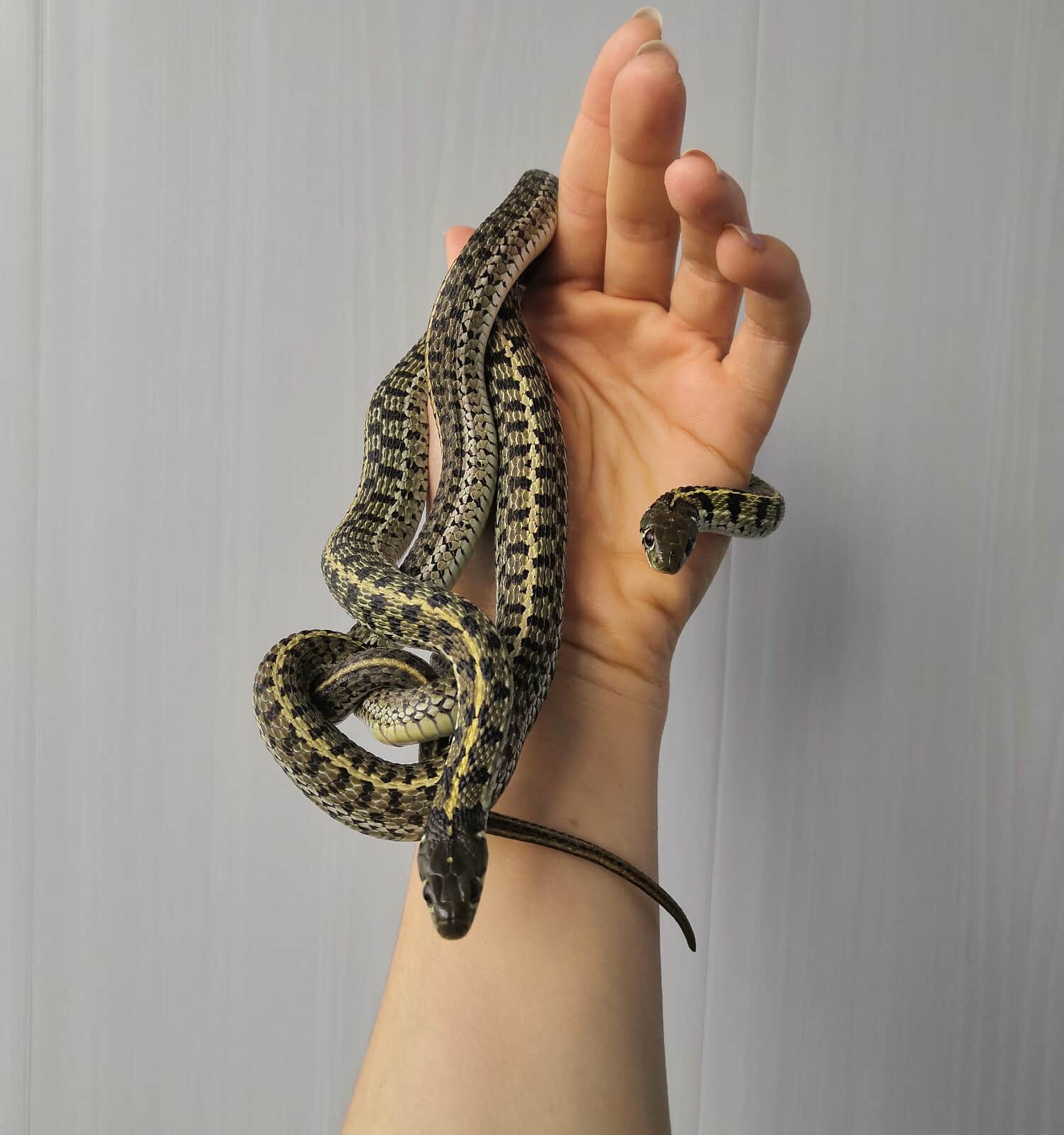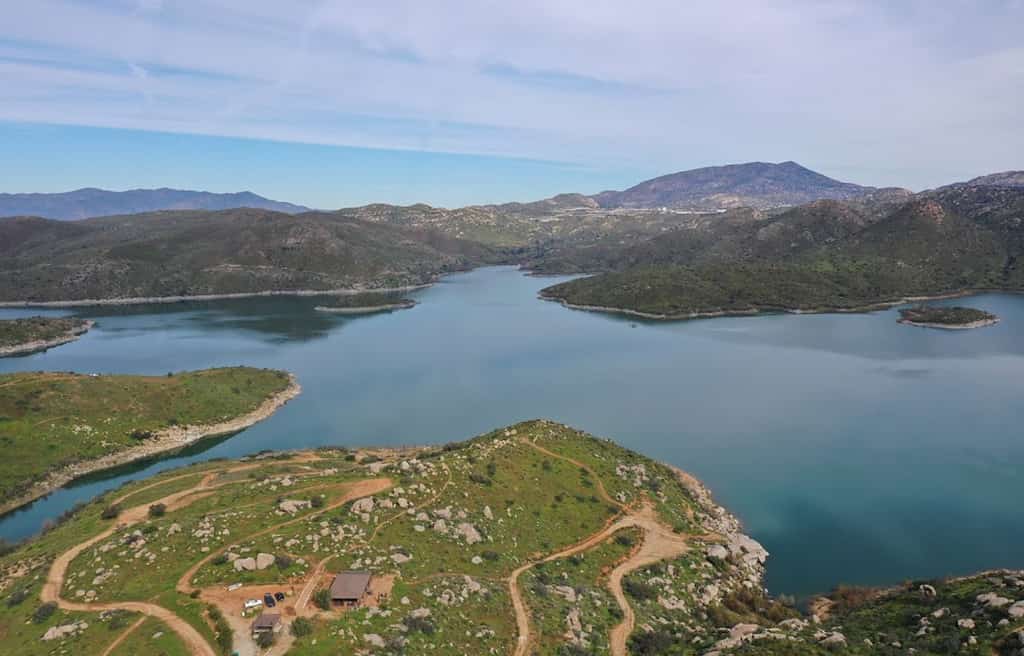Baja California is a Mexican peninsula covering the area from the Pacific Ocean to the southern end of California, the southern state of the USA. This peninsula offers some of Mexico’s most dramatic sea and landscape views, including dormant volcanoes, old mission towns, and vast and remote deserts. While Baja California is known for its pristine beaches, it also has some magnificent lakes. In addition, these lakes provide an essential water source for various wildlife, including snakes. Below are two of the most snake-infested lakes in Baja California.
Water Snakes Found In Baja California Lakes
While the only true aquatic water snakes are sea snakes, Baja California is home to several species of semi-aquatic snakes. They include:
Two-striped Gater Snake (Thamnophis hammondii )
The two-striped garter snake is a semi-aquatic snake native to western North America. This water snake is medium in size, roughly around 18 to 30 inches in length, with a small head hardly wider than its neck. They have two primary color variations: a checkered variant and a striped variant. The latter has a yellowish stripe running down either side of its body, with a relatively uniform dorsal coloring. However, the stripes are absent in the checkered variant. Instead, it has two rows of dark spots on either side.

The two-striped garter snake is a semi-aquatic snake native to western North America. This water snake is medium in size, roughly around 18 to 30 inches long, with a small head hardly wider than its neck.
©Jason Mints/Shutterstock.com
Checkered Gater Snake (Thamnophis marcianus)
The checkered garter snake is a semi-aquatic snake belonging to the subfamily Natricinae, which forms part of the Colubridae family. These snakes are native to the southwestern United States, Central America, and Mexico. Checkered garter snakes are tiny, usually harmless snakes found near bodies of water in Baja California. They are primarily green in color, with an unmistakable black checkerboard pattern running down their backs. In addition, these garter snakes have large cream-colored crescent markings on either side of their heads. However, their bellies are yellow.

Checkered garter snakes are tiny, usually harmless snakes found near bodies of water in Baja California. They are primarily green in color, with an unmistakable black checkerboard pattern running down their backs.
©iStock.com/slowmotiongli
Marcy’s Checkered Garter Snake (Thamnophis marcianus marcianus)
The Marcy’s checkered garter snake is a semi-aquatic snake. They are generally brown, tan, and olive in color, with a narrow, light-colored dorsal stripe. Furthermore, the Marcy’s checkered garter snake has a distinct black checkered pattern running down the sides of its body. There are also dark patches on each side of the neck. A light-colored crescent shape separates these patches from the corners of the mouth. In addition, they have plain bellies, keeled scales, and a single anal plate. These snakes prefer dry grassland habitats, usually near a water source.

The Marcy’s checkered garter snake is a semi-aquatic snake. They are generally brown, tan, and olive in color, with a narrow, light-colored dorsal stripe.
Image: Ami_atari, Shutterstock
©Ami_atari/Shutterstock.com
West Coast Garter Snake (Thamnophis validus)
The West Coast garter snake belongs to the Colubridae family, and it is native to Mexico. This snake has four recognized subspecies:
- Mexican Pacific Lowland garter snake
- T.v. Tammnophysoides
- T.v. Isabellae
- T.v. Validus
The latter occurs in the Mexican states of Chihuahua, Baja California Sur, Jalisco, Guerrero, and Sonora.
Two Most Snake-Infested Lakes in Baja California
1. El Corrizo
One of the most snake-infested lakes in Baja California is the El Carrizo Reservoir. This lake lies south of the town of Tecate in Baja California. It supplies 95% of the drinking water for Rosarito Beach and Tijuana. El Corrizo is managed by CONAGUA. Many people enjoying the lake have spotted the common garter snake swimming in its waters. However, this snake is not venomous and harmless to humans, so there is no need to worry.

One of the most snake-infested lakes in Baja California is the Presa El Carrizo Reservoir. This lake lies south of the town of Tecate in Baja California.
2. Laguna Hanson
The Laguna Hanson is situated over 5,000 feet above sea level and surrounded by an exotic desert lined with tropical oasis resorts, granite boulders, and a pine forest. It is a shallow, high meadow lake. Laguna Hanson was named after an American rancher who settled in the area in 1872 until he moved away in 1880. However, many maps document the lake’s official name, Laugna Juárez. However, most people know it as Laguna Hanson, after the rancher. People visiting this lake often report sightings of two-striped garter snakes slithering across the water. But luckily, these snakes are not venomous, so there is nothing to fear. If you leave these snakes alone, they will leave you alone.

The Laguna Hanson is situated over 5,000 feet above sea level and surrounded by an exotic desert lined with tropical oasis resorts, granite boulders, and a pine forest.
Thank you for reading! Have some feedback for us? Contact the AZ Animals editorial team.








